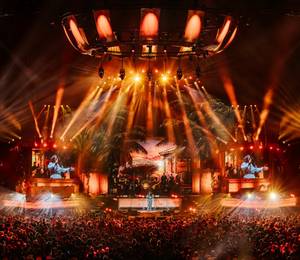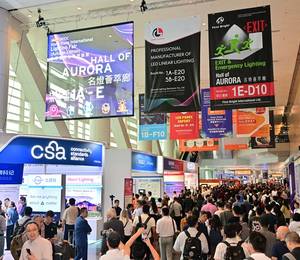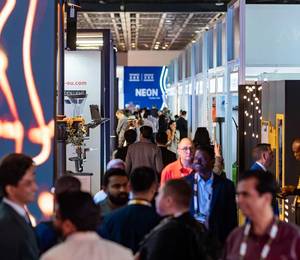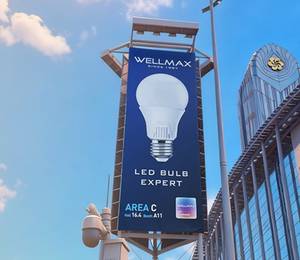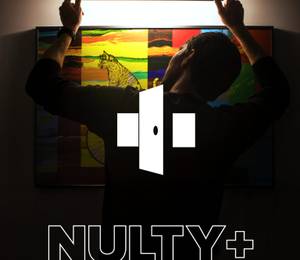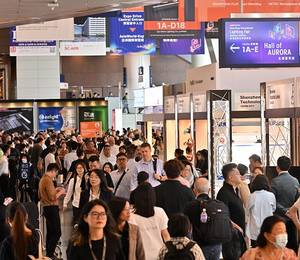Expo City Dubai is “a human-centric” metropolitan vision of the future currently in the making, and being developed as a large district with offices, homes, exhibition spaces, convention centres and entertainment venues on the site of Dubai’s impressive Expo 2020.
Right at the heart of this is the Al Wasl Plaza, a large spherical plaza complete with a lush garden, covered by an expansive semi-translucent dome which is fully video mapped and contains around 600 moving lights.
With the repurposing of the venue for its post-Expo life, Al Wasl Plaza’s lighting has recently been reprogrammed to run on a full grandMA3 control system platform by a team led by Fabrizio “Ganz” Ganzerli.
The space is utilised for a diversity of events, presentations and immersive shows and will host COP28, the 28th United Nations Climate Change conference in November / December 2023. Italian production specialist Agora is the technical services and equipment supplier for the space coordinating all the sound and lighting requirements with around 40 crew onsite. They deal with a range of services from consultancy to technical equipment rental.
Daily activity includes “Business as Usual” audio and lighting content synchronized with video projections, creating a single show from sunset to midnight, plus special events including concerts, official events and conferences.
With grandMA3 hardware already specified for Expo 2020’s lighting control (the event ran from October 2021 to March 2022, delayed due to the Covid-19 pandemic), the setup and programming work for the Expo period started in March 2021 and was programmed in Mode2.
In September 2022, with the post-Expo transformation well underway and the new entertainment season upcoming, Fabrizio explained that while they started where they left off, in this time, the new grandMA3 software releases had also advanced substantially, so he was confident to switch the system to a full grandMA3.
A grandMA3 full-size and a grandMA3 light are in the control room running with 16 x grandMA3 processing unit M and two grandMA3 processing unit XL. A WYG suite onsite mirrors this exact configuration which can control up to 115,000 parameters.
Fabrizio explained that the showfile was organised as one container holding all the pre-programmed shows playing in the venue which are called up via MIDI note so the correct showfile is loaded. Each time a new light show was added for the current season, it added to the master showfile, which ended up being substantial.
The basic lighting system comprises 630 moving lights and around 30,000 LED ‘pixel flowers’ and stems which are distributed around the garden, all individually mapped and controlled via a disguise media server. There are also 3000 strobes, and six remote follow spot stations, so with overlays, some shows have over 2000 lighting cues between the moving heads and the flowers.
The data network is an essential tool for the stable and flexible control and management of all these elements. It runs on an optical fibre backbone to all the main switcher points, and the shows are programmed over 13 x VLANs accommodating a mix of MA-Net3, ArtNet, FollowME and disguise protocols.
The DMX signals are transported in ArtNet and converted to DMX via 100 x PathPort and Netron switchers which are distributed all around the venue and across the garden area.
“When I realised the software was ready, I knew grandMA3 was the only way to go with this venue as this is the control system of the future,” noted Fabrizio.
Ahead of the transition, the crew were made aware of and familiar with the new graphical interface as it related to the new features. Fabrizio also organized the console layouts maintaining the same logic, having reference points for identifying the fixtures. “It was a big step forward for them too, but everyone was super excited to enter the new world of grandMA3, knowing that this will be the future for the next few years!”
Using the possibility to convert a grandMA2 showfile to grandMA3 showfile, he diligently transposed the showfile with over 15,000 cues, around 1,000 assigned playbacks and 7,000 presets, complete with Cues, Patch and Presets. “This was faithfully transcribed in every detail” together with Cue parts and single channel timing.
Fabrizio and his colleague Francesco Ettorre then knuckled down to the intensive task of rewriting all the Macros and Effects which in grandMA3 run on a completely different system.
To compare the old showfile with the new in real time, they kept a console in Mode2 connected to WYSIWYG and another in Mode3 (with the new showfile) connected via ArtNet to the first, and, utilising a simple MACRO for enabling / disabling ArtNet-IN, could see what was happening in the original file and replicate it in the new quickly by switching between the two.
Cue-by-cue all the Effects were rebuilt through the Phaser Editor, and in between all of this, the daily regular show and performance schedule continued.
Fabrizio finds the new Phasers “very powerful, simple and fast” and thinks the concept of Steps is hugely useful, allowing the creation of “very complex effects with a clear and simple visualization”.
He also finds using the values in ABS and REL mode very useful, as the changes become seriously faster in the editing phase, and Recipes is another popular grandMA3 tool that he thinks will soon become “essential”.
Once the transcription phase was complete, they moved on to the test phase which was short as the software “proved very stable and powerful”. He immediately noticed the increased speed of the system, “It is so much more reactive and quicker in processing! We’re talking about a 200 MB showfile with a control capacity of over 115,000 parameters!”
So far, everyone using the system has been very happy, and since switching to grandMA3, no-one has looked back. Furthermore, the consoles have been running steadily in grandMA3 without any issues. “I believe we are the first in the world right now to be using a grandMA3 system in Mode3 to control such a large and complex fixed installation system!” he concluded.
The Expo City operators have all been trained on grandMA3 and are fully integrated with it. Future plans include organising courses to improve their knowledge and skills in conjunction with support from MA Lighting and their local partners.
The Expo City lighting equipment is supplied by Agora, network equipment is owned by Expo City Organization.
